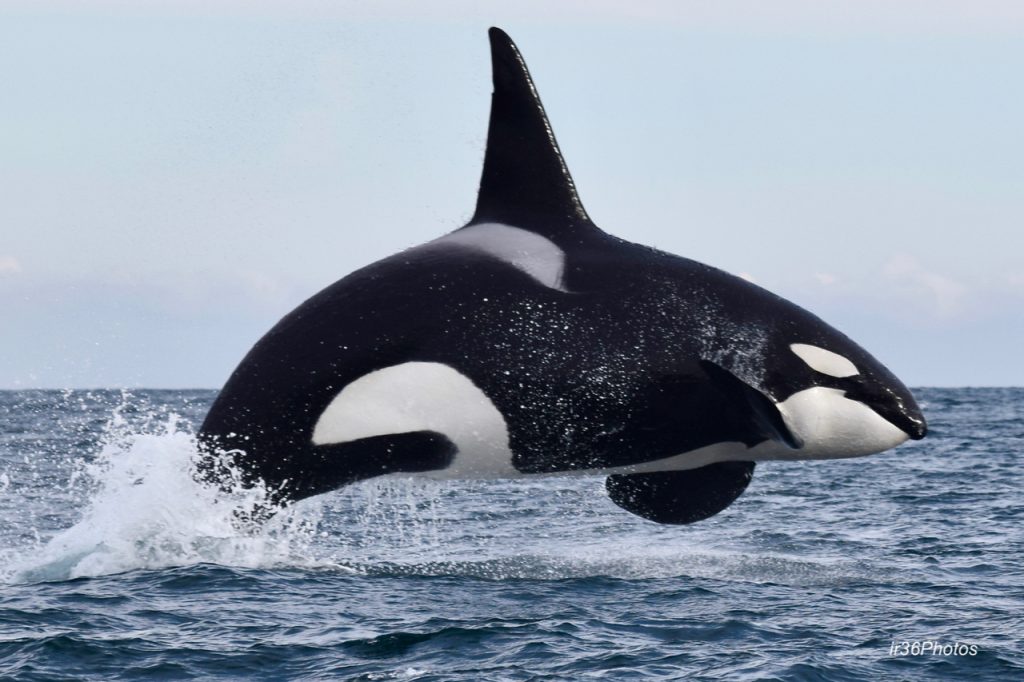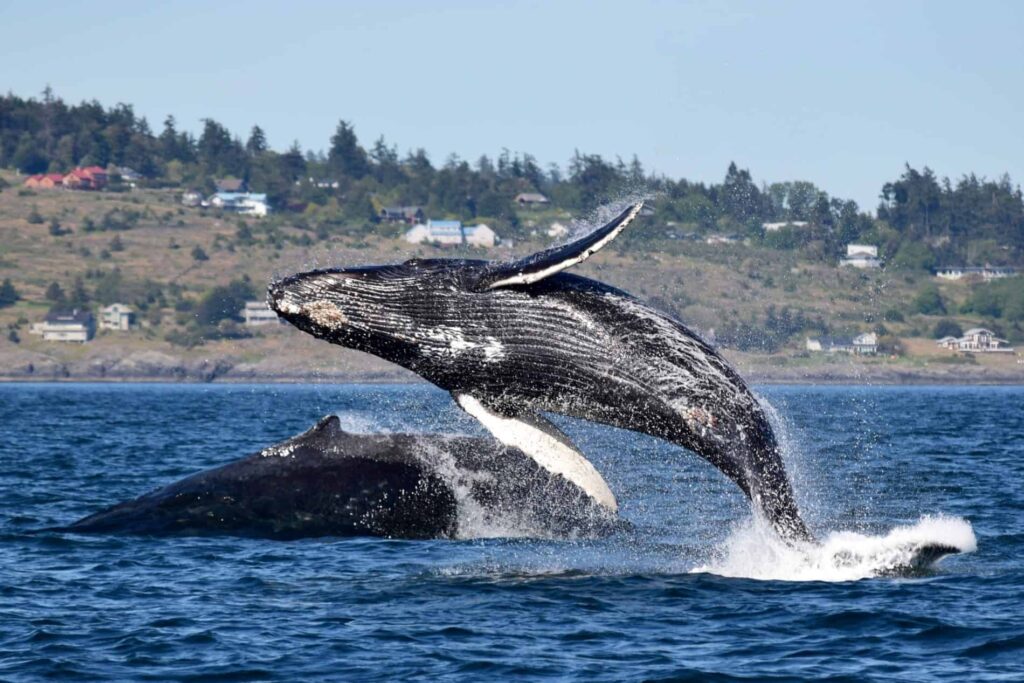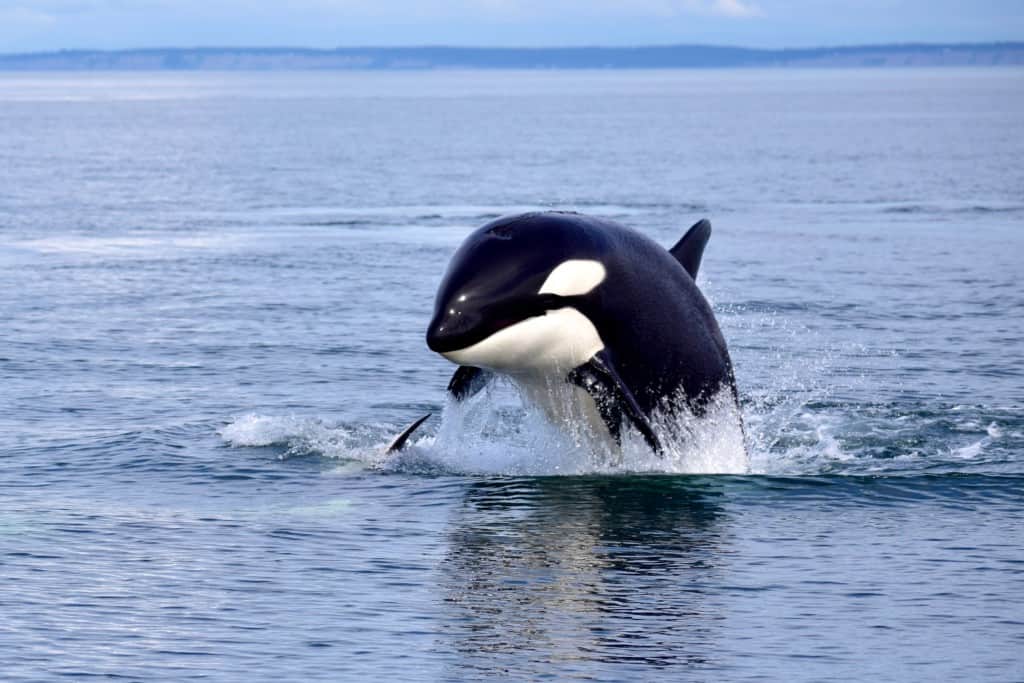A common and inquisitive question that is often asked aboard our tours. Of course to get the true answer we would have to ask the Whales themselves. Unfortunately they were unavailable for comment so we had to make do with the latest scientific research.
It’s an amazing site to be seen, these animals showcasing the true extent of their size. However, it is not quite as common as aquarium shows and wildlife documentaries make out. My personal analogy is it’s like aliens forming an impression of humans by watching YouTube. On YouTube, aliens would see happy, smiling faces moving rhythmically to music. When the aliens finally got to Earth they would be rather disappointed to find us not dancing all the time. Just like us with busting a move, for a whale to jump out of the water it takes the right situation and mood.

In technical terms, a whale’s jump is called a breach. It is classified as when more than 40% of the animal’s body makes it above the water’s surface. It is an unusual behavior to carry out due to the high-energy demand it requires. For example, a full Humpback breach requires the whale to break through the water’s surface at its top speed of 28km/h.
The simplest explanation for a whale jumping out of the water appears to be sociality or alertness. Which one of those, depends on the context. Killer Whales are highly social animals, and are composed of multiple family groups, so when related groups meet up this makes breaching more likely. Breaching events when groups of animals’ merge or split is also common in the Humpback Whale. During the breeding season male Humpbacks perform their characteristic song but when the music stops it has been noted for them to jump out of the water, with the breach of one often encouraging its neighbors. Perhaps a whale’s version of musical statues?

With larger whales, like the Humpback, breaching frequency also appears to increase with wind speed. One hypothesis is that, with a noisy ocean surface, a breach may provide a form of communication that can be better dispersed and received by other whales in multiple directions. In fact, it has been observed that the whales breach more often when their associates are further away, at least 2.5 miles. In addition, if the waters are particularly choppy, a breach may give a large marine mammal the chance to breath in air that is free from spray.
Another reason for Humpback Whales, and Baleen Whales in general, to breach is to remove some pesky hitchhikers. It is not uncommon for Humpback Whales to be riddled with barnacles and lice and, although not harmful to the whale, too many could be annoying so a jump can be a cleansing event.

Breaching events have been linked to communication, with social species jumping more frequently. Propositions include aggression, annoyance, vigor of a male, and courtship behavior. A jump can also be used to add emphasis to a signal already made: vocal or visual, indicating a desire or a need.
Turning our attention back to Killer Whales, a good time to see them leaping out the water is during a hunt. Air is 800 times less dense than water and so a jump gives the Killer Whale a good advance on its prey. This high-speed leap is known as porpoising and even once the feeding event is over, jumping can take place as a social form of celebration. In particular, jumping behavior by young ones in the pod, with no conceivable purpose, may simply be practice for the future.

Another version of popping out the water for an Orca is called the “spy hop”, the animal will emerge vertically displaying its head. Killer Whales have terrific eyesight both above and below the water so popping its head out could be the animal observing its surroundings, looking for other members of its pod or seeing if there is any food around. However, for Whales lower down the food chain a breach may actually be a signal that there are predators around rather than a signal where the food is.

So in summary, the answer to the question “Why do whales jump?” is much more complex than meets the eye and all possible explanations would make a very long list indeed. What we can be pretty certain about is that they do not do it to entertain us humans but for some purpose beneficial to their survival. It takes a certain combination of circumstance, mood, timing and luck to see a whale jump. But of course, when it happens it is truly a magical and humbling experience.
Written by Naturalist Emma.

